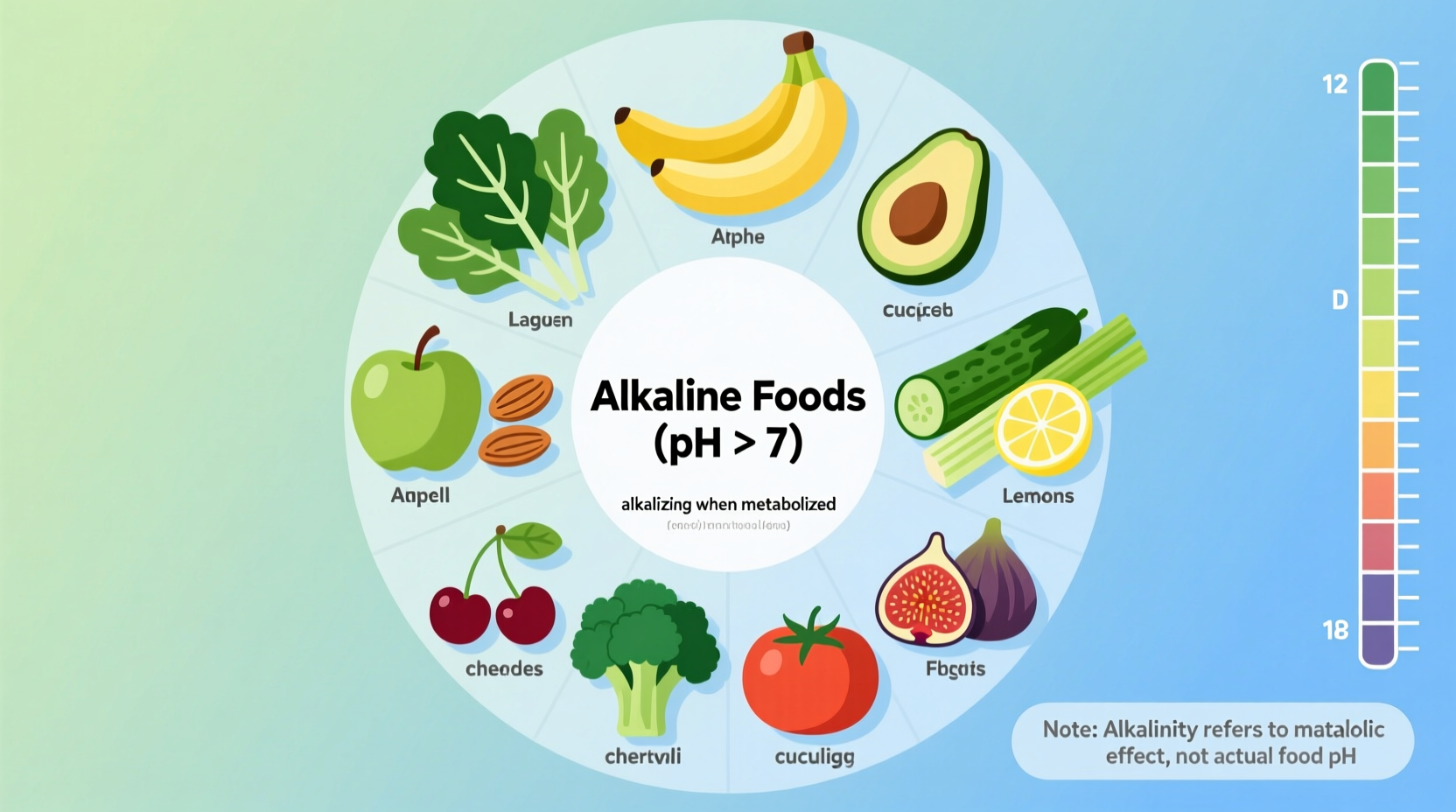Leafy greens, most fruits (especially citrus), root vegetables, nuts, and legumes are among the most alkaline-forming foods. Despite popular claims, no food can significantly alter your body's pH, but these nutrient-dense options support overall health as part of a balanced diet.
When searching for "what foods have alkaline," you're likely exploring the popular alkaline diet concept. Let's cut through the confusion with science-backed facts you can actually use. While your body maintains a tightly regulated pH balance regardless of diet, certain foods do create an alkaline ash after digestion - meaning they leave behind minerals that have an alkalizing effect on urine, not your bloodstream.
Why the Alkaline Food Concept Matters (Within Reason)
Understanding alkaline-forming foods isn't about changing your body's pH - that's physiologically impossible through diet alone. What matters is that these foods typically represent some of the most nutrient-dense options available. The alkaline diet's popularity has accidentally spotlighted foods rich in potassium, magnesium, and calcium - minerals associated with numerous health benefits.
| Alkaline-Forming Food Category | Top Examples | Key Minerals Contributing to Alkalinity |
|---|---|---|
| Leafy Greens | Spinach, kale, Swiss chard, arugula | Potassium, magnesium, calcium |
| Citrus Fruits | Lemons, limes, grapefruit (despite acidic taste) | Potassium, magnesium |
| Root Vegetables | Beets, sweet potatoes, carrots | Potassium, magnesium |
| Nuts & Seeds | Almonds, chestnuts, pumpkin seeds | Magnesium, calcium |
| Legumes | Lentils, lima beans, chickpeas | Potassium, magnesium |
The Science Behind Food Alkalinity
Food's potential renal acid load (PRAL) determines whether it's acid or alkaline forming. Researchers at the University of California have developed PRAL scoring to measure this effect. Negative PRAL scores indicate alkaline-forming foods, while positive scores show acid-forming potential.
According to the National Institutes of Health, the body maintains blood pH between 7.35-7.45 through sophisticated buffering systems. As Dr. Susan Jenkins from Harvard Medical School explains: "Your kidneys and lungs work constantly to keep your blood pH stable. No food can override these regulatory mechanisms."
Your Practical Alkaline Food Guide
Forget chasing pH changes - focus on incorporating these nutrient-rich options that happen to be alkaline forming:
Top 10 Alkaline Powerhouses
- Spinach - PRAL: -14.0 (per 100g)
- Avocados - Rich in healthy fats and potassium
- Lemons - Alkalizing despite initial acidity
- Almonds - The only nut with alkaline-forming properties
- Cucumbers - 95% water with alkalizing minerals
- Broccoli - Contains sulforaphane and alkalizing compounds
- Watermelon - High water content with potassium
- Garlic - Alkalizing and immune-supportive
- Olive oil - Healthy fat with alkaline properties
- Millet - The only alkaline-forming grain

Common Misconceptions Clarified
Let's address three widespread myths about alkaline foods:
Myth 1: Alkaline foods change your blood pH
Fact: Your blood pH remains stable between 7.35-7.45 regardless of diet. As the Mayo Clinic states: "No sound research shows that changing the body's pH through diet can treat or prevent disease."
Myth 2: You must avoid all acidic foods
Fact: Many acidic-forming foods like lean proteins and whole grains are essential for balanced nutrition. The key is proportion - aim for 70-80% alkaline-forming foods in your diet according to most nutritionists.
Myth 3: Alkaline water significantly changes body pH
Fact: Your stomach acid immediately neutralizes alkaline water. Research published in the Journal of Environmental and Public Health found no meaningful impact on systemic pH from alkaline water consumption.
Practical Integration Strategies
Instead of obsessing over pH, use this approach to incorporate more alkaline-forming foods:
- Start your day with lemon water (adds flavor without sugar and provides vitamin C)
- Swap one acid-forming meal daily for a leafy green salad with avocado and almonds
- Replace processed snacks with cucumber slices or celery sticks with almond butter
- Use millet or quinoa instead of wheat-based grains 2-3 times weekly
- Add citrus zest to dishes for flavor without increasing acidity
When Alkaline Focus Becomes Counterproductive
Be cautious if you find yourself:
- Eliminating entire food groups unnecessarily
- Spending excessive money on "alkaline" products
- Experiencing social isolation due to restrictive eating
- Ignoring medical advice in favor of pH-focused approaches
Nutrition science consistently shows that dietary patterns emphasizing whole plant foods deliver the most health benefits - regardless of their alkalizing potential.
Final Takeaway
The most valuable aspect of the alkaline food concept isn't pH manipulation, but the emphasis on nutrient-dense whole foods. By focusing on incorporating more leafy greens, colorful vegetables, and certain fruits, you're naturally building a healthier diet. Remember that dietary balance and variety always trump any single nutritional theory.











 浙公网安备
33010002000092号
浙公网安备
33010002000092号 浙B2-20120091-4
浙B2-20120091-4